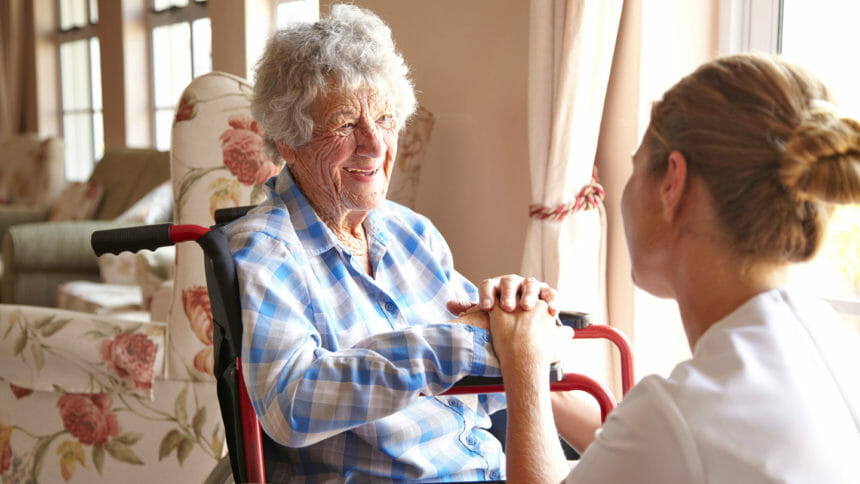
1. Consider devices with tracking capability.
Many utilize resident-assigned RFID or GPS location features that quickly point to their location using software. Before panicking, use common sense.
“Things to consider are: Was it accidentally placed in the laundry or trash? Did the resident remove it and place it in a drawer? Or is the resident out with family for the day and no one made a note in the system?” says Barbara Benner, technical trainer for STANLEYHealthcare.
Some larger devices, such as fall alert and pressure ulcer monitoring devices, and even specialty beds or chairs, now employ smartphone apps and Wi-Fi location services, notes Jared Pitney, vice president, senior living for RF Technologies., who also encourages physical “spot monitoring” checks to ensure big-ticket items don’t get misplaced.
Careful inventory and logging procedures can indicate lost device trends. Consider assigning a physical area for storage of all out-of-use devices, or delegating one person as the caretaker, so all items can be tracked appropriately, Pitney adds.
Allie Roufus, senior customer marketing specialist for Direct Supply, recommends mandatory sign-in and -out logs.
“Some systems generate reports that can often be emailed on a scheduled basis for proper inventorying and device maintenance needs,” Roufus adds. Color-coded pagers make it easy for staff to return items to designated areas.
“The process has helped many of our customers because it simplifies the technology-sharing process and provides accountability for the staff,” says Bob Venditti, product manager for Philips Home Monitoring.
2. Assess your facility’s monitoring needs before buying.
“With so many technology capabilities available now, providers often purchase more technology functionality than they actually end up needing or using,” says Jeff Moore, vice president, long-term post acute care markets North America for Philips Home Monitoring.
3. Involve staff and residents in your product evaluations.
They’ll likely take more “ownership” and care for the devices later on, says Pitney. If a device is not “user-friendly,” it likely will be neglected or abused, adds Patricia Howell, RN, a member of McKesson’s Clinical Resource Team.
Regular staff training also helps, adds Benner. For example, many devices now on the market have low-battery and locator alert features — both important for caregivers to know about.
4. Keep devices in top working condition.
“Ensure that environment-of-care rounds are conducted regularly to reduce or eliminate broken equipment or equipment in poor repair,” advises Howell. “Incorporate routine inspection and preventive maintenance.”
Establish priority responsibilities for maintenance — areas that affect residents first, but also high-risk related areas, inadequate equipment, physical plant issues and communication breakdowns.
5. Identify device loss vulnerabilities.
Pitney and Moore say the two most common times for a device’s loss are while it is out-of-use or a resident is transferring.
“Staff devices are more commonly lost or damaged than resident devices because staff members carry more technology around with them and leave the community much more often,” Moore adds.
Consider secure areas, or even bins, to protect valuable monitoring devices, advises Jen Mazzei, marketing specialist for Secure Care Products.
Mistakes to avoid
- Failing to involve staff and residents in product evaluations. Engage them early so they take “ownership” in guarding and caring for these devices.
- Neglecting to have an inventory and tracking system. Most devices today have built-in tracking capabilities.
- Ignoring key “device loss” vulnerabilities. Take extra precautions and use checklists during risky times like resident errands or transfers.
From the April 01, 2017 Issue of McKnight's Long-Term Care News





